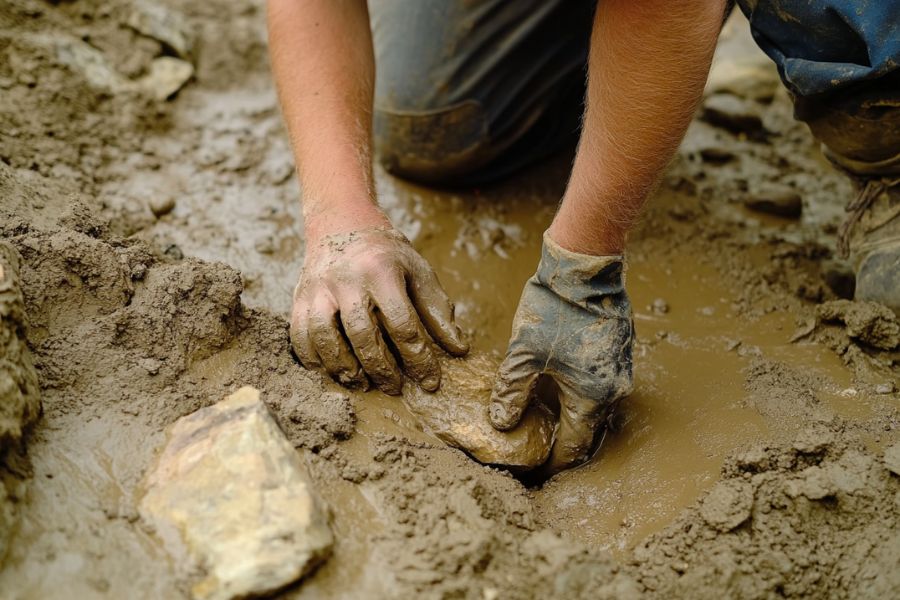From the shores of Lake Erie to the winding Ohio River, from the rolling hills of Appalachia to the fertile plains of the Midwest, Ohio is a state of diverse landscapes.
For rockhounds and mineral enthusiasts, the search for tourmaline can be frustrating and time-consuming. Many have spent countless hours scouring the Buckeye State without success.
But fear not! We’ve done the hard work for you, researching and compiling the top 6 locations where tourmaline can be found in Ohio. Save yourself time and energy by focusing on these hotspots.
Read on to discover the best places to unearth this coveted gemstone in the heart of the Midwest.
How Tourmaline Forms Here
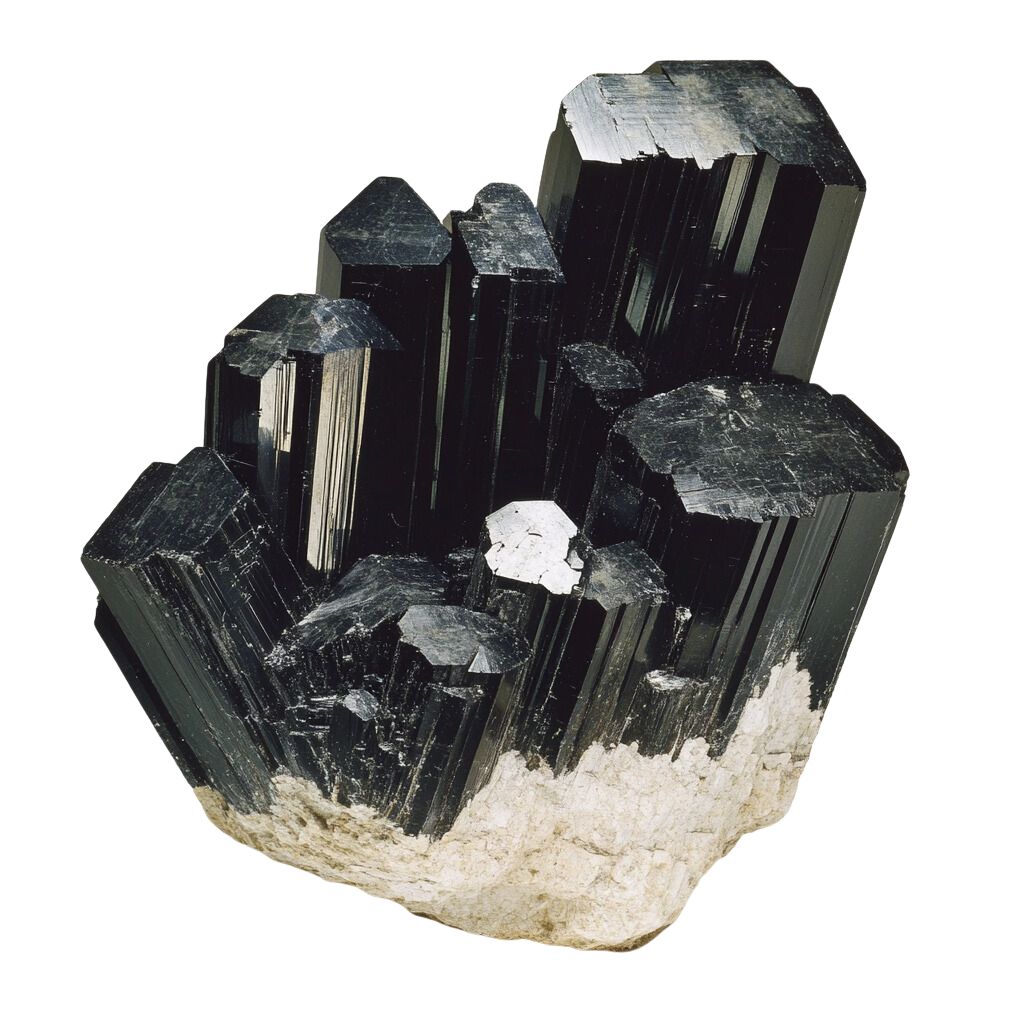
Tourmaline forms deep underground through intense heat and pressure. It originates from hot, mineral-rich fluids that move through fractures in rocks like granite and pegmatite. As these fluids cool, the minerals within them start to crystallize, forming tourmaline.
The color of tourmaline depends on the specific minerals involved, leading to a wide range of hues including pink, red, green, and blue.
Over millions of years, these crystals grow and become the beautiful, multifaceted stones we see today. Tourmaline is prized for its variety of colors and is often used in jewelry and decorative items.
The Types Of Tourmaline
Several incredible types of Tourmaline can be found in the US as well as in our state. Each is uniquely beautiful and interesting including:
Elbaite
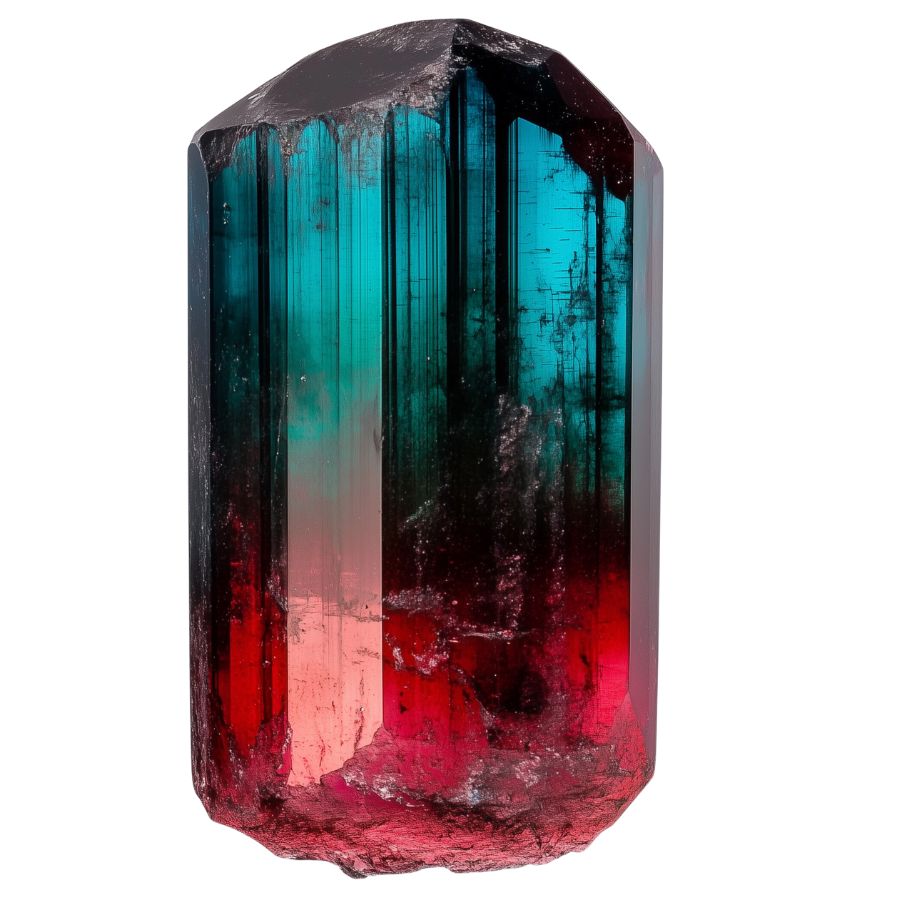
Elbaite is found in pink, red, green, blue, yellow, and even colorless forms. What makes elbaite special is its ability to show multiple colors in a single crystal, like the famous “watermelon” tourmaline with pink and green hues.
This gem stands out due to its complex chemical makeup, which includes lithium, sodium, and aluminum. This composition gives Elbaite its diverse color range and dichroism, allowing it to display different colors when viewed from different angles.
Elbaite has a unique place in history as the first tourmaline variety in which lithium was discovered back in 1818. Some rare types, like the neon blue Paraiba elbaite, are highly sought after by collectors and jewelers.
Schorl
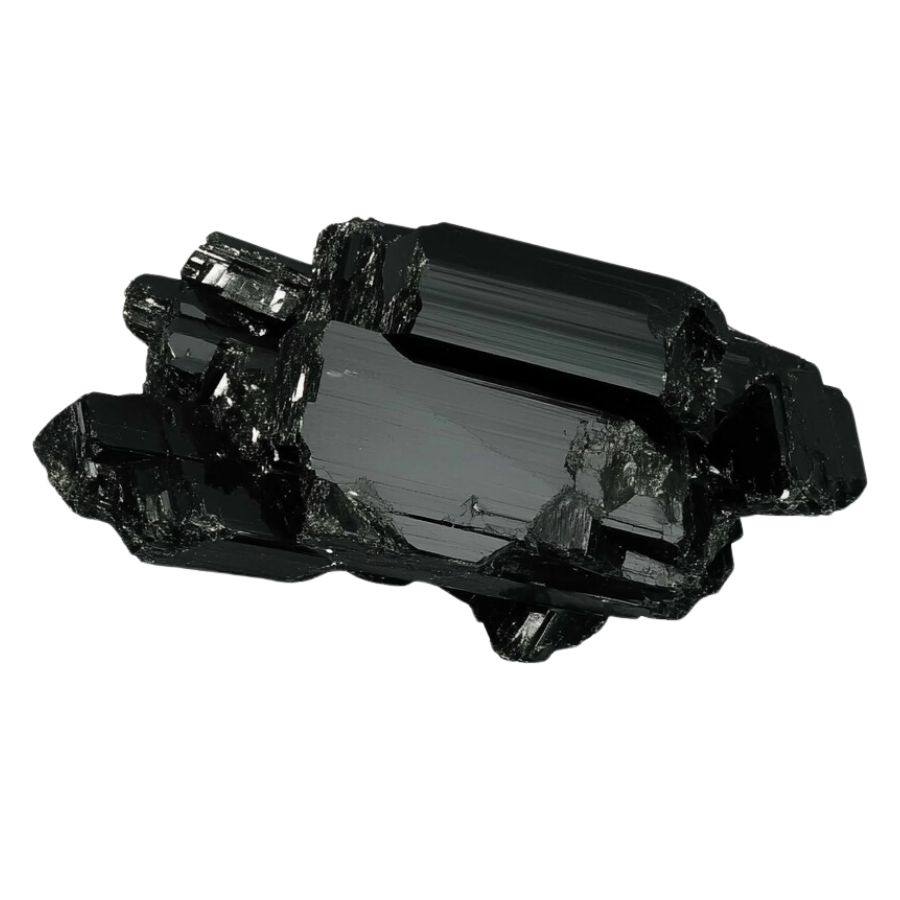
Schorl is known for its deep, rich color. It typically forms long, prismatic crystals with a shiny, glass-like surface when polished. Unlike other tourmalines, schorl gets its distinctive black color from high iron concentrations.
One of Schorl’s most fascinating features is its ability to become electrically charged through heating or rubbing. When charged, it can attract or repel small particles.
This unique electrical property makes Schorl valuable in various industries. It’s used in electronics and manufacturing to control static electricity and electromagnetic interference.
Despite being less colorful than other tourmalines, schorl’s practical applications make it an important and interesting variety.
Rubellite
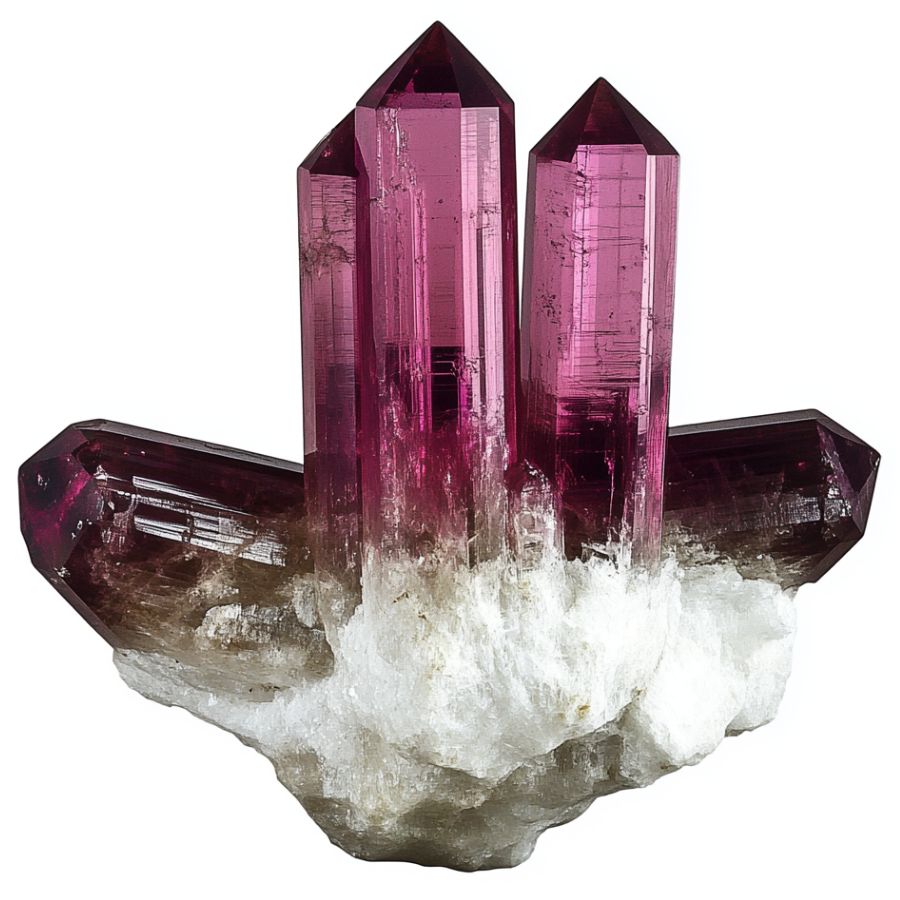
Rubellite stands out with its vibrant pink to red colors. The most prized ones show a pure, saturated red without any brown or orange hints. This beautiful color comes from manganese in its makeup.
One cool thing about rubellite is its double refraction. It can look like it has two different colors when you view it from different angles.
Dravite
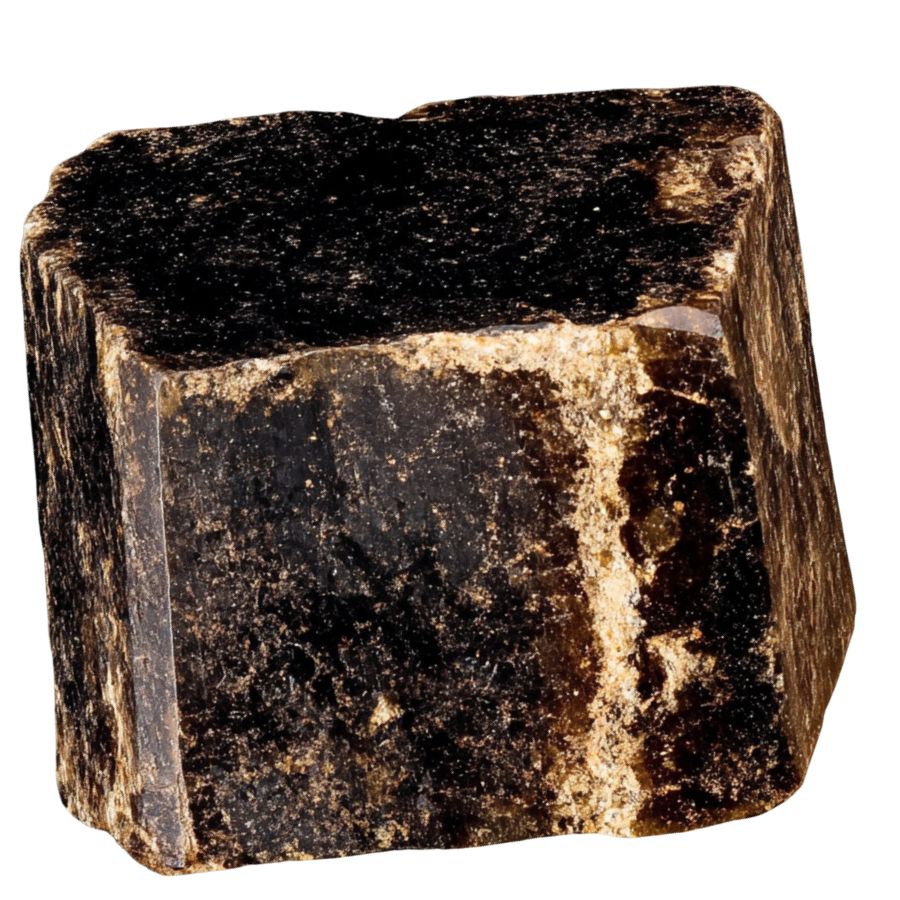
Dravite, or Brown Tourmaline, comes in shades from dark brown to light brown-yellow. It can look a bit like Smoky Quartz, with a semi-see-through quality.
Its crystals are often needle-like or prismatic, with points at both ends. This sets it apart from other tourmalines like the darker schorl or the colorful elbaite.
What makes dravite special is its rich sodium and magnesium content. This sets it apart from other tourmalines. It was first discovered in 1883 and named after the Drava River in Slovenia.
Indicolite
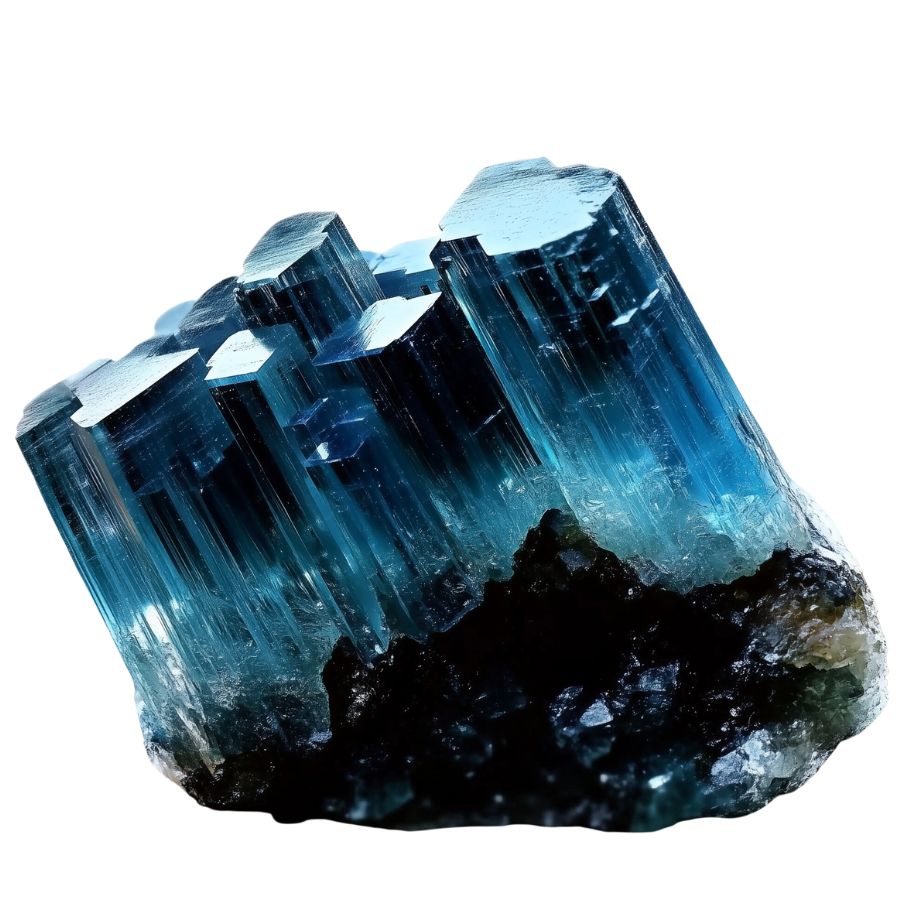
Indicolite is a rare and captivating blue to blue-green stone. It’s prized for its pure, bright blue color, which is considered the rarest within the tourmaline family. The hues can range from light blue-green to deep, rich blue, often with high clarity.
What sets Indicolite apart is its unique optical effects. It shows pleochroism, appearing to change color when viewed from different angles. Some specimens also display chatoyancy, creating a “cat’s eye” effect when cut in a certain way.
Indicolite is sometimes called “Brazilian sapphire” due to its resemblance to the precious gem. However, they’re different minerals.
The increasing demand for blue tourmalines has made indicolite highly sought-after in the gemstone market, appreciated for its beauty and rarity.
Watermelon Tourmaline
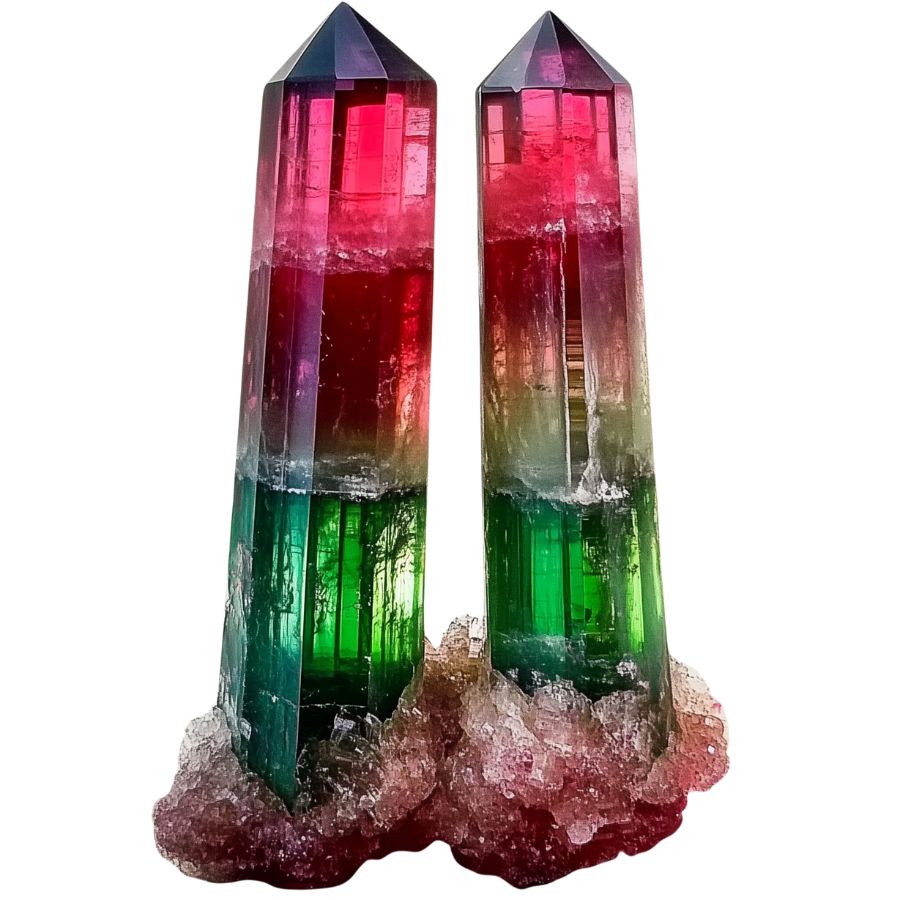
Watermelon tourmaline is truly one-of-a-kind. It looks just like a slice of watermelon, with a pink or red center and a green outer layer. This unique look happens because different elements join the crystal at different times as it grows.
These crystals often form in a rounded triangle shape. They’re see-through to somewhat clear and have a glass-like shine. When cut into slices, they really do look like little watermelons!
Cat’s Eye Tourmaline
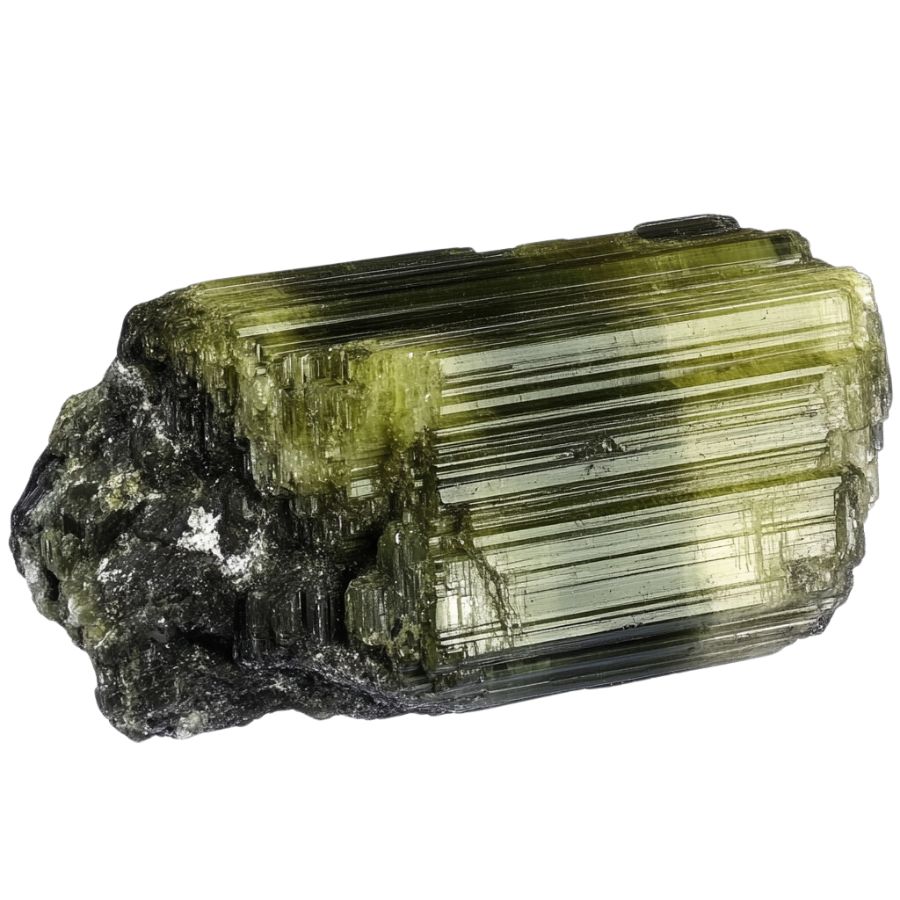
Cat’s eye tourmaline is known for its mesmerizing chatoyancy effect. This creates a bright band across the stone’s surface, resembling a cat’s eye.
This stone comes in various colors, from green to pink to brown, and is usually semi-translucent to opaque.
What makes this stone special is the perfect alignment of tiny, needle-like inclusions inside it. These scatter light in a unique way, creating that eye-catching effect. It’s quite different from other tourmalines that don’t have this feature.
Unlike other cat’s eye stones, Tourmaline offers a wider range of colors and is often more affordable.
Achroite
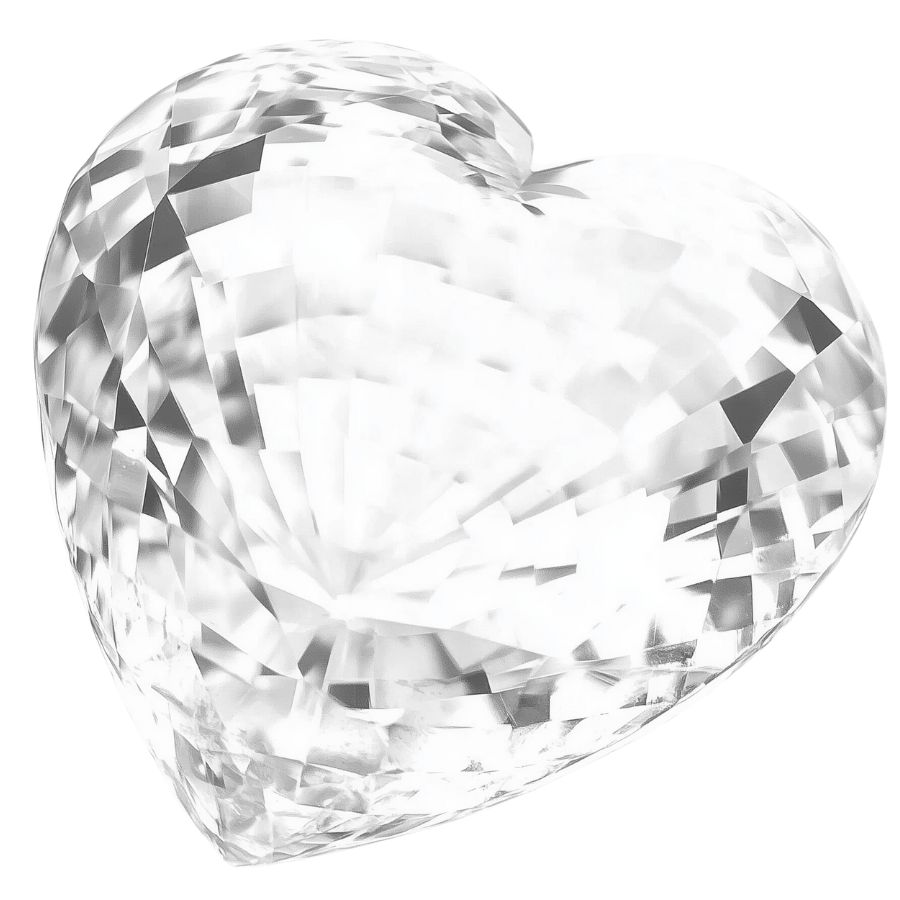
Achroite is a rare, colorless variety of tourmaline that looks like a drop of clear water turned to stone. It’s completely transparent, making it unique among tourmalines which usually have color. The name comes from Greek, meaning “without color.”
What’s special about achroite is that it doesn’t change color when viewed from different angles. It means the stone can be cut in many ways without losing its clarity.
Verdelite
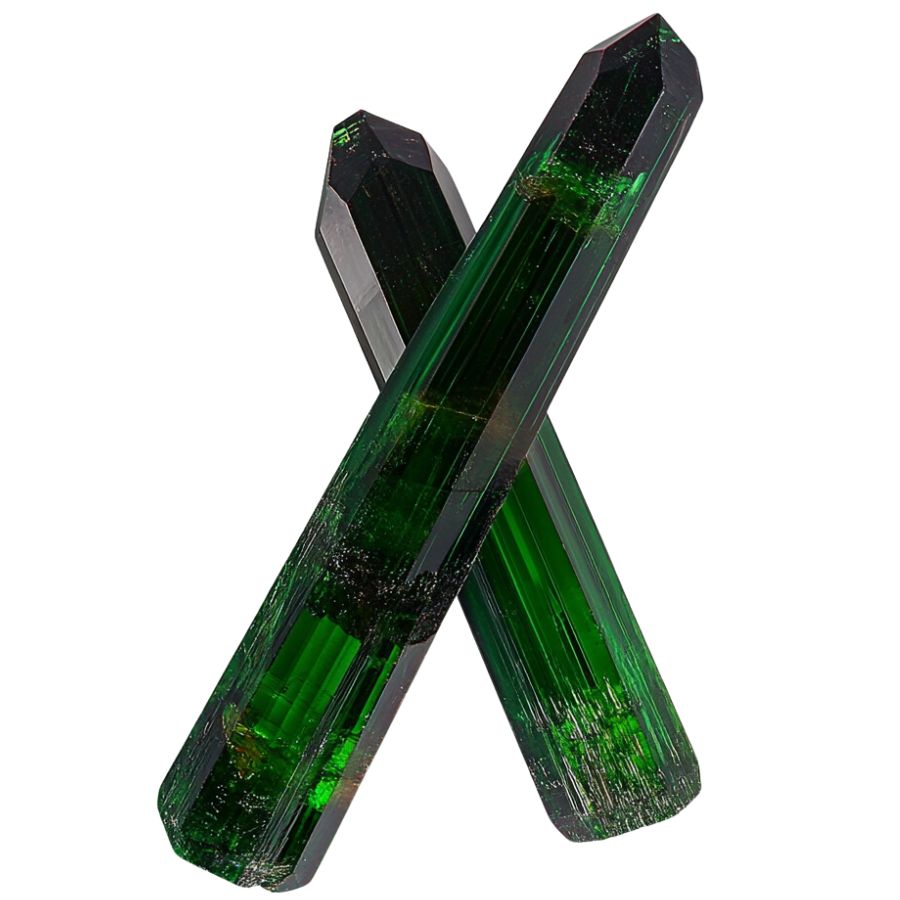
Verdelite is known for its beautiful green color. It can range from light green to deep emerald.
One thing that makes verdelite special is that you can find big, clear crystals of it. This isn’t always easy with other gemstones.
People love using verdelite in jewelry because its rich color and interesting light effects make it a popular choice for all kinds of accessories. Each piece of verdelite is like a little piece of nature you can wear.
Paraíba Tourmaline
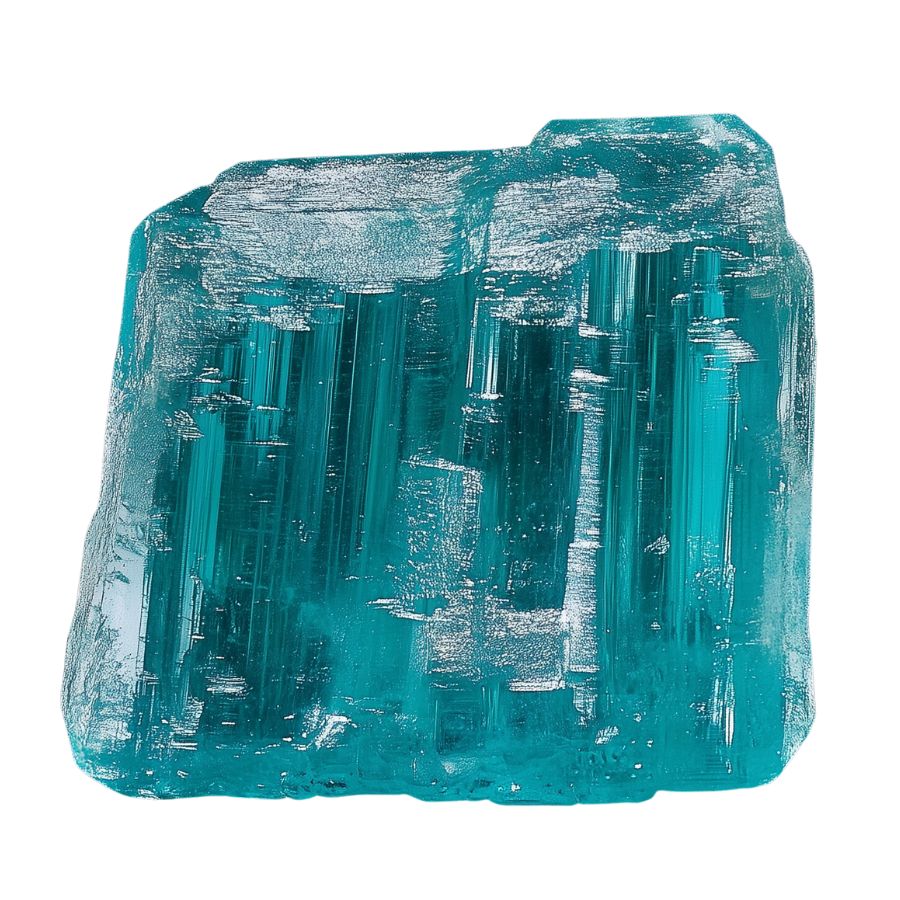
Paraíba Tourmaline is a rare gemstone that catches the eye with its vibrant neon blue or green color. It’s like no other tourmaline you’ve seen before. The intense glow comes from copper in the stone, making it stand out from its cousins.
This stone is one of the rarest. For every 10,000 diamonds mined, only one Paraíba tourmaline is found.
It was only discovered in the late 1980s, making it a newcomer in the gem world. But Paraíba tourmaline’s unique color and rarity quickly made it a favorite among gem lovers.
Its discovery caused quite a stir in the gem community. Even small stones can be valuable because of how rare and beautiful they are.
What Rough Tourmaline Looks Like
When you’re out looking for rough Tourmaline on your own it’s important to know what you’re looking for. But before we dive into specifically what to look for you need to make sure you understand the type of rocks and minerals you’re seeing.
If you want REAL results finding incredible rocks and minerals you need one of these 👇👇👇
Finding the coolest rocks in isn’t luck, it's knowing what to look for. Thousands of your fellow rock hunters are already carrying Rock Chasing field guides. Maybe it's time you joined the community.
Lightweight, mud-proof, and packed with clear photos, it’s become the go-to tool for anyone interested discovering what’s hidden under our red dirt and what they've already found.
Join them, and make your next rockhounding trip actually pay off.
What makes it different:
- 📍 Find and identify 140 incredible crystals, rocks, gemstones, minerals, and geodes across the USA
- 🚙 Field-tested across America's rivers, ranchlands, mountains, and roadcuts
- 📘 Heavy duty laminated pages resist dust, sweat, and water
- 🧠 Zero fluff — just clear visuals and straight-to-the-point info
- ⭐ Rated 4.8★ by real collectors who actually use it in the field
Here are some tips to help you recognize rough tourmaline.
Look for Color Variations
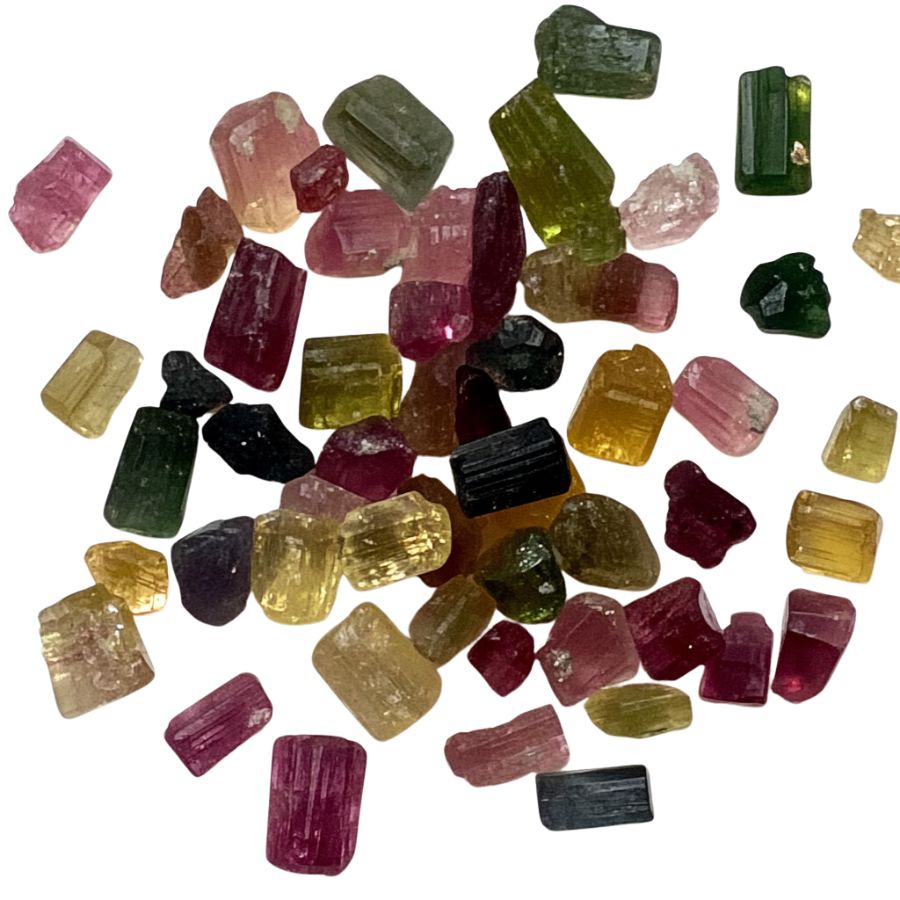
Tourmaline comes in many colors, like pink, green, blue, and even black. Some pieces have multiple colors, like watermelon tourmaline, which is pink and green.
If you see these color mixes, it’s likely tourmaline. Keep an eye out for vibrant shades.
Assess the Density and Weight
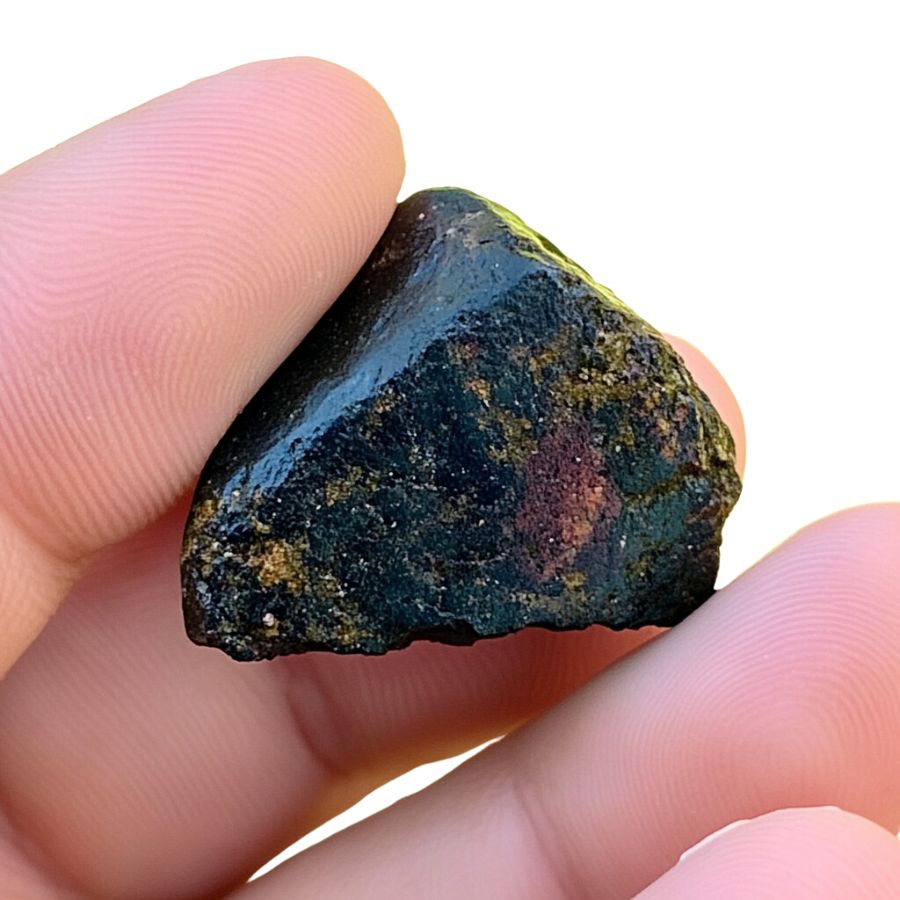
Rough tourmaline is relatively heavy for its size. If you pick up a piece and it feels denser than expected, it could be tourmaline. This weight can help you confirm your find.
Examine the Crystal Structure
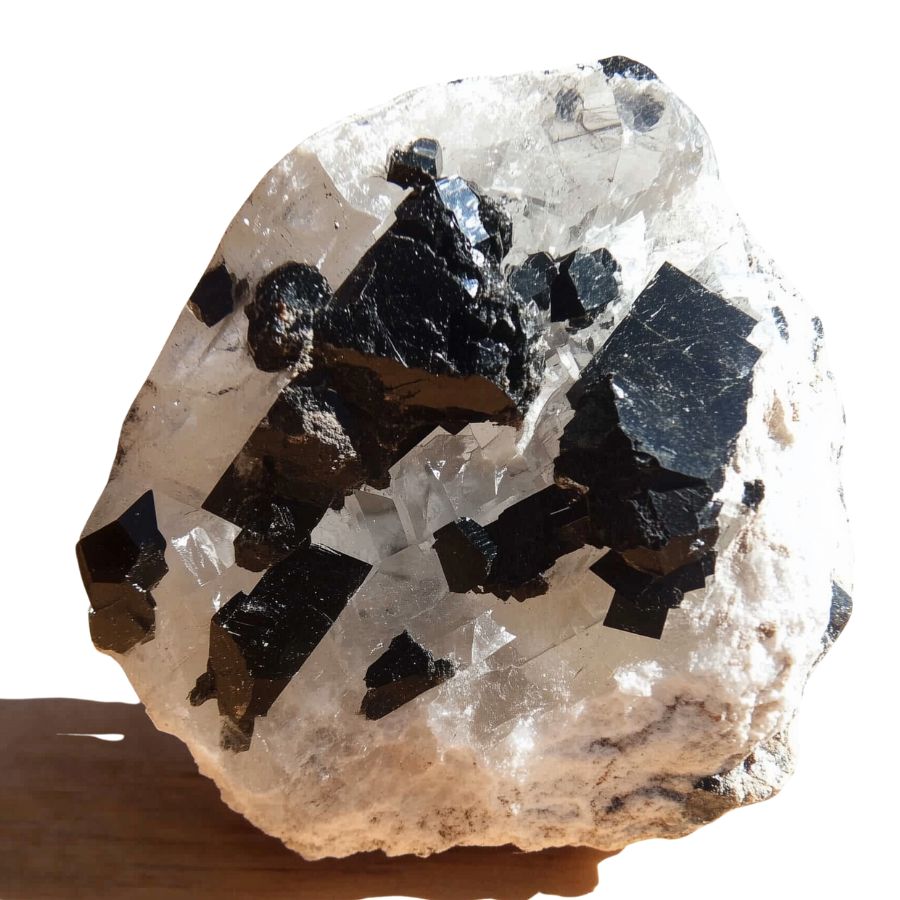
Tourmaline features distinctive crystal shapes, ranging from slender and elongated to chunky forms. Look for triangular cross-sections and striations on the surface, which indicate its unique growth patterns.
Check for Transparency
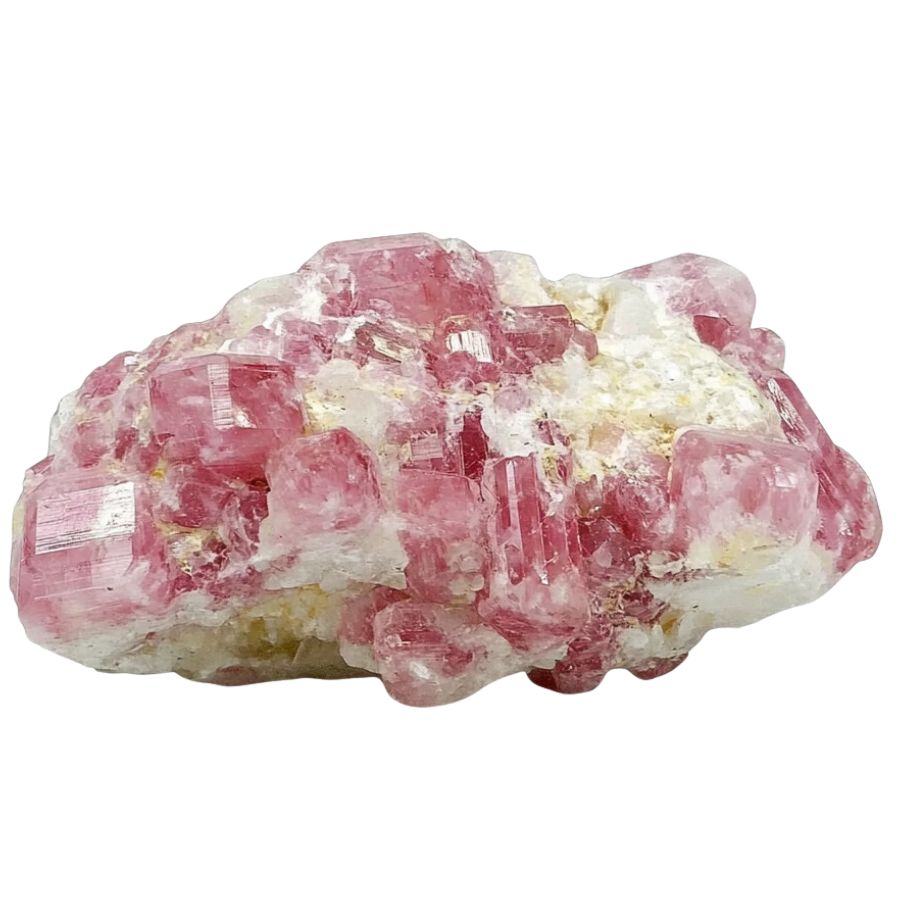
Some rough tourmaline can be slightly transparent. If you hold it up to the light, you might see through it a bit. This transparency can be a good sign that you have tourmaline.
A Quick Request About Collecting
Always Confirm Access and Collection Rules!
Before heading out to any of the locations on our list you need to confirm access requirements and collection rules for both public and private locations directly with the location. We haven’t personally verified every location and the access requirements and collection rules often change without notice.
Many of the locations we mention will not allow collecting but are still great places for those who love to find beautiful rocks and minerals in the wild without keeping them. We also can’t guarantee you will find anything in these locations since they are constantly changing.
Always get updated information directly from the source ahead of time to ensure responsible rockhounding. If you want even more current options it’s always a good idea to contact local rock and mineral clubs and groups
Tips on where to look
Once you get to the places we have listed below there are some things you should keep in mind when you’re searching:
Look for Sedimentary Rocks
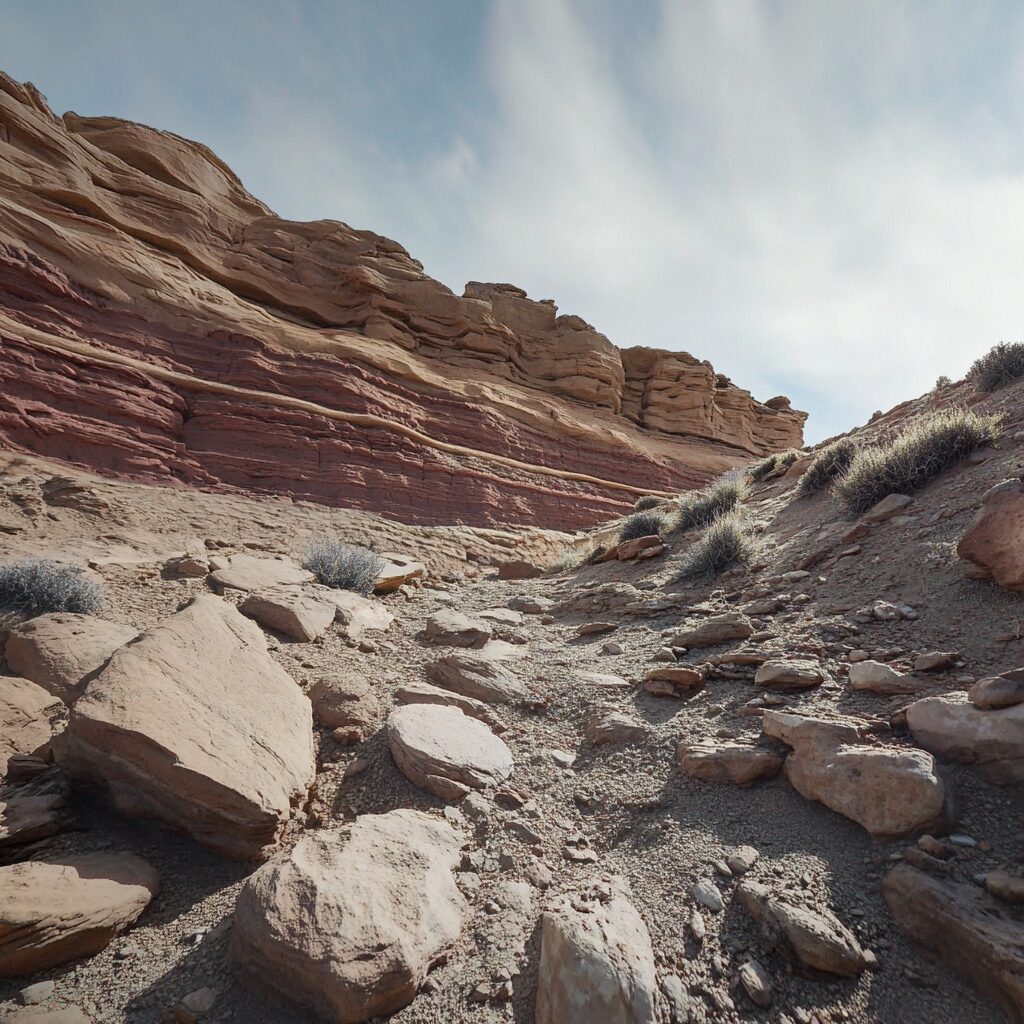
Sedimentary rocks are great places to find tourmaline. These rocks form from layers of sand, mud, and minerals. Over time, minerals like tourmaline can get trapped.
Look in riverbeds or areas where sediment has built up. You might find small pieces or even larger crystals.
Explore Mines
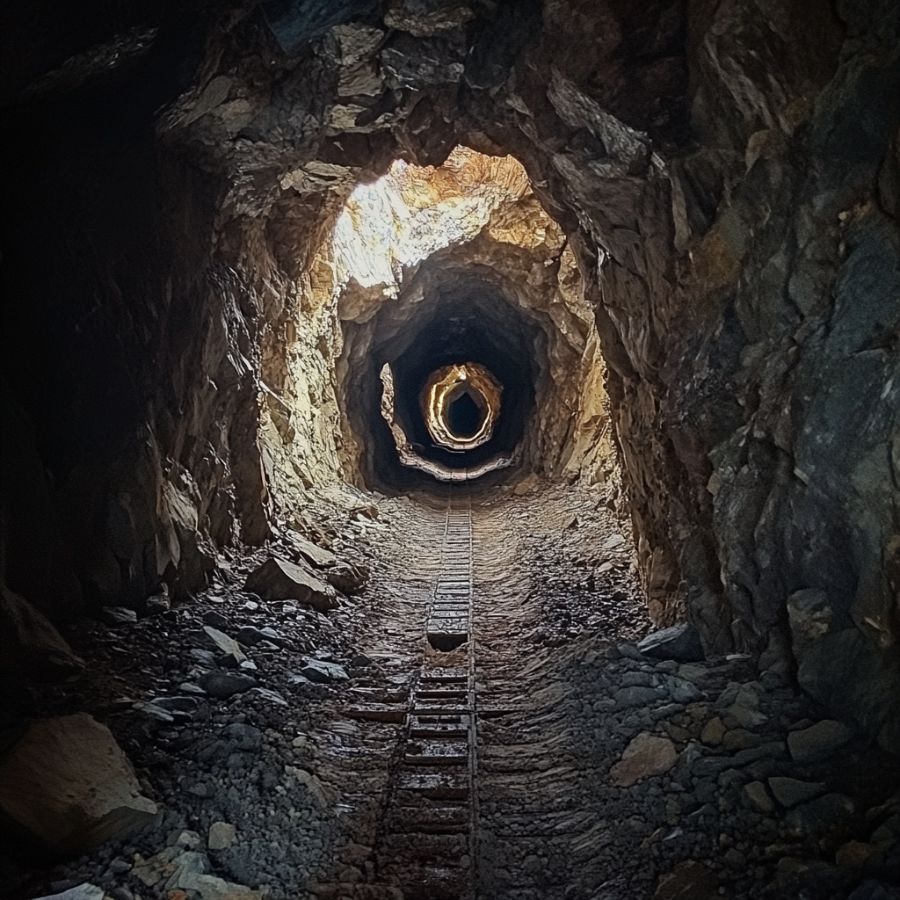
Mines are great spots to find tourmaline. Many mines across the U.S. extract various gemstones, including tourmaline.
Some mines even allow visitors to search for gems themselves. Always check if they have guided tours or special digging days.
Search in Gravel Pits

Gravel pits are often overlooked, but they can be treasure troves. These pits dig deep into the earth, exposing layers of rock.
Tourmaline can be found in the gravel. Just sift through the material carefully.
Some Great Places To Start
Here are some of the top locations in the state to begin your search. These places offer excellent opportunities for exploration.
Always Confirm Access and Collection Rules!
Before heading out to any of the locations on our list you need to confirm access requirements and collection rules for both public and private locations directly with the location. We haven’t personally verified every location and the access requirements and collection rules often change without notice.
Many of the locations we mention will not allow collecting but are still great places for those who love to find beautiful rocks and minerals in the wild without keeping them. We also can’t guarantee you will find anything in these locations since they are constantly changing.
Always get updated information directly from the source ahead of time to ensure responsible rockhounding. If you want even more current options it’s always a good idea to contact local rock and mineral clubs and groups
Clarion Fire Clay
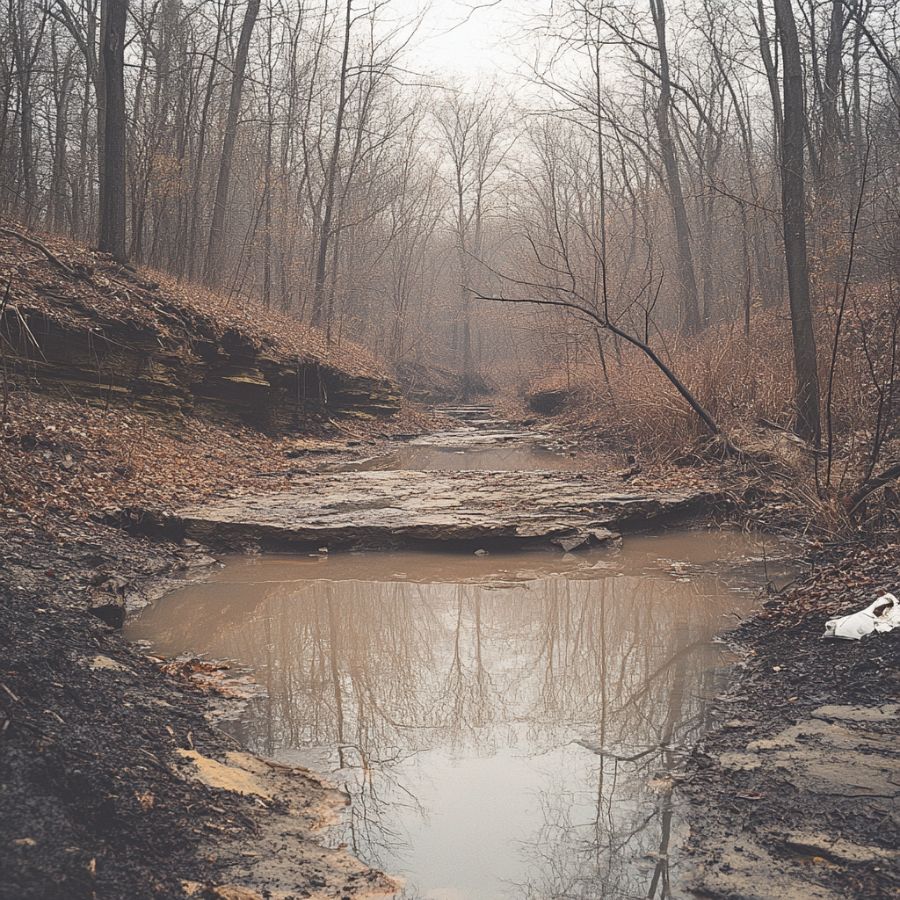
Clarion Fire Clay site near West Point is part of the Appalachian Highlands’ Kanawha Section. Tourmaline has been discovered here, making it a rare find in Ohio’s mineral landscape.
The site’s geology is fascinatingly diverse. It boasts deposits of biotite, calcite, kaolinite, and even rutile. This mineral variety hints at the area’s complex geological past and makes it a treasure trove for stone enthusiasts.
Rockhounds can explore creek beds, where water has exposed interesting specimens over time. Surface deposits, a result of past mining operations, offer easy access to potential finds.
The area’s gravels, often found along streams, are another promising spot to search for tourmaline and other minerals.
Everett Sand Rock Quarry
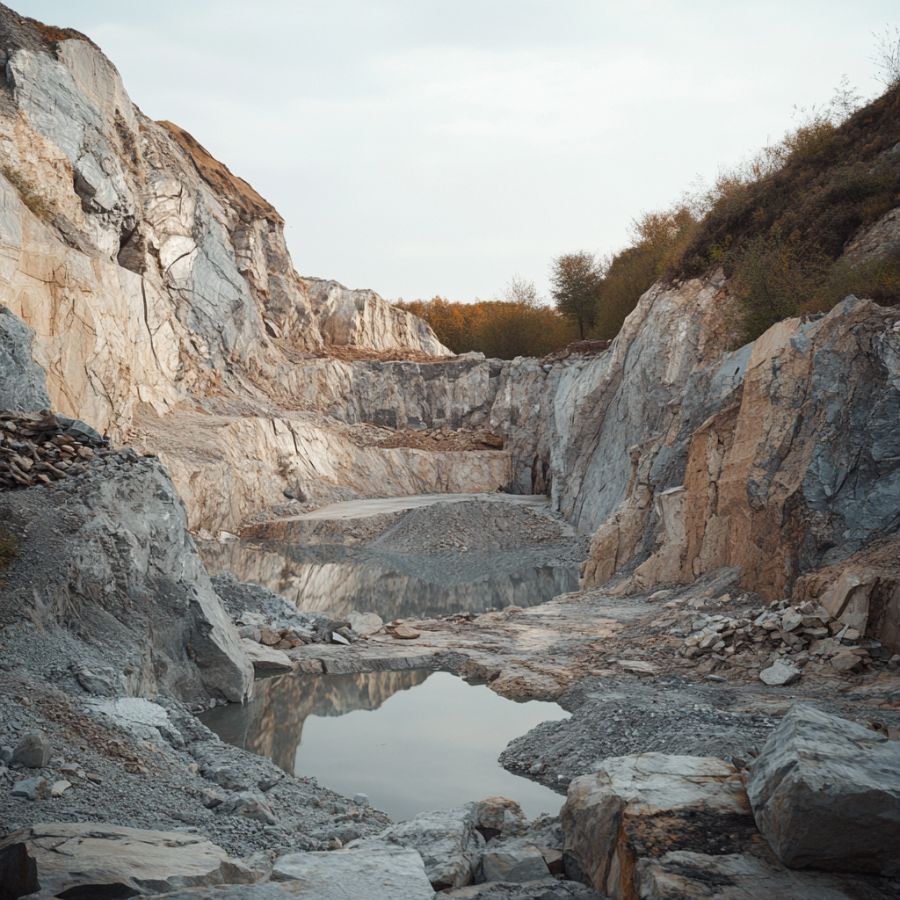
Nestled along the Licking River in Ohio, the Everett Sand Rock Quarry in Toboso is a hidden gem for rockhounds. Just 9 miles east of Newark, this site boasts a rich geological tapestry.
The quarry’s mineralogy makes it a prime spot for finding tourmaline, alongside other minerals like orthoclase and magnetite. Its unique formation stems from ancient geological processes, creating an ideal environment for mineral enthusiasts.
Rockhounds can explore the quarry’s various nooks and crannies, from gravelly areas to small creek beds. The south side of the quarry is particularly promising for discoveries.
Keep an eye out for the distinctive prismatic crystals of tourmaline, which can range in color from black to green. The quarry’s geological diversity means you might also stumble upon quartz specimens or other interesting minerals while searching for tourmaline.
Sciotoville Clay
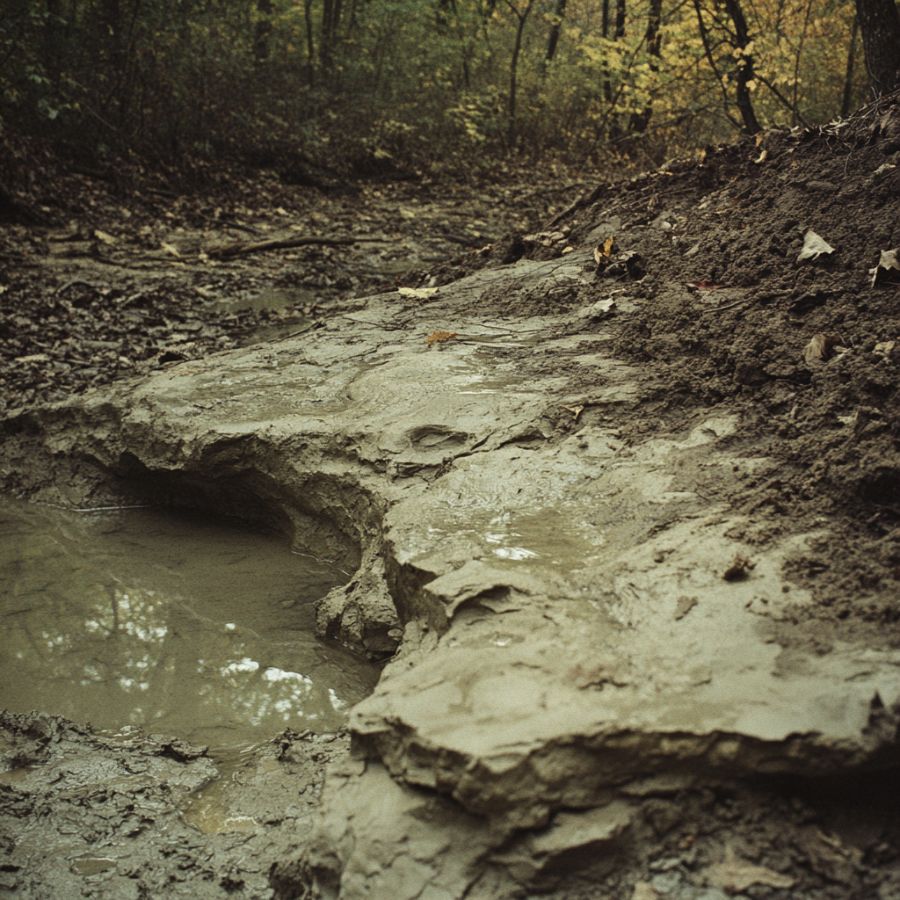
Sciotoville Clay is located along the Ohio River in southern Ohio. This area, part of Portsmouth city, is known for its rich clay deposits that hold secrets from ancient riverbeds.
The clay layers, shaped by the Ohio River over millennia, create a perfect environment for preserving minerals like tourmaline.
Rockhounds can explore the creeks and gravel beds that cut through these clay deposits. The slow-moving water bodies of the past have trapped various minerals, making this spot a treasure trove for gemstone enthusiasts.
The sedimentary nature of the region means tourmaline is often found mixed with gravel and clay in creek beds.
Sciotoville’s geological history ties closely with Ohio’s industrial past. The area’s clay was once prized for pottery and brickmaking. Today, it offers a unique opportunity for amateur geologists to uncover tourmaline and other gemstones.
Clear Creek
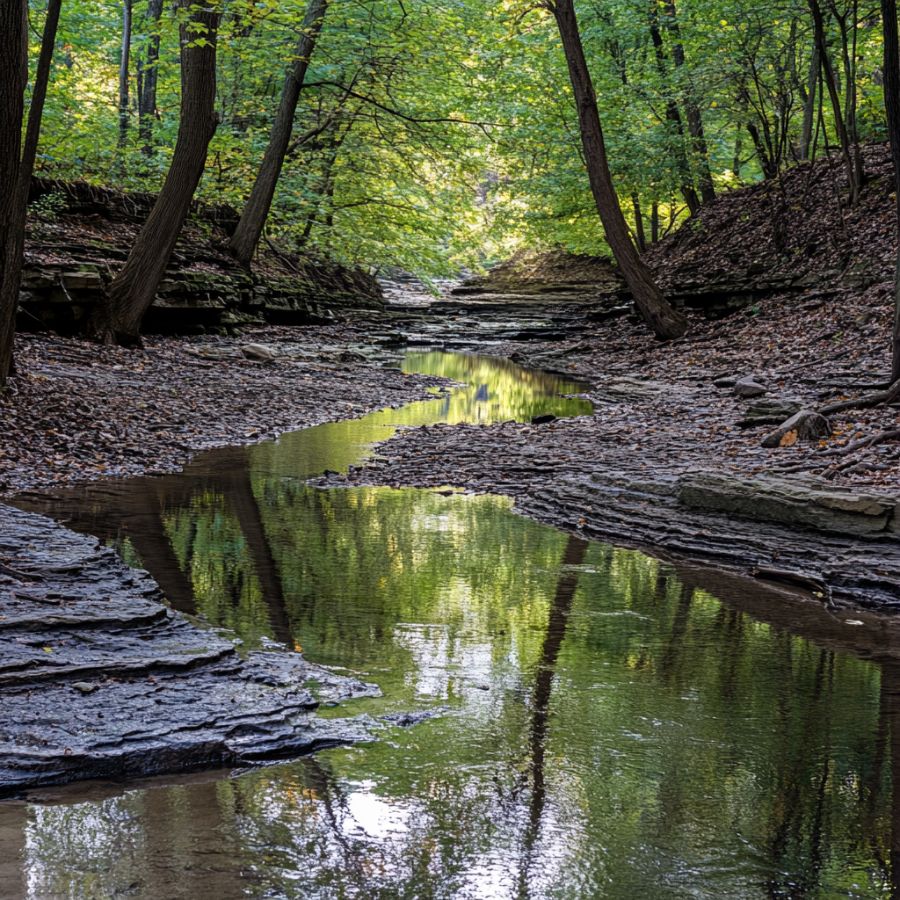
Clear Creek, a tributary of the Great Miami River, winds through southeastern Ohio’s picturesque landscape. While not traditionally known for tourmaline, the creek’s unique geology makes it an intriguing spot for rockhounds.
The area’s standout feature is its dramatic blackhand sandstone cliffs, carved by ancient glacial meltwater. These rugged formations, coupled with deep ravines and bubbling creeks, create a rockhound’s paradise.
For gemstone enthusiasts, Clear Creek’s gravel beds and creek banks offer promising hunting grounds. The constant water flow exposes and deposits various minerals, potentially including tourmaline.
While searching, keep an eye out for the area’s famous fossil beds, which have yielded impressive prehistoric finds. Remember, Clear Creek’s beauty extends beyond stones – it’s also a haven for over 2,000 species of plants and animals.
Lawrence Clay
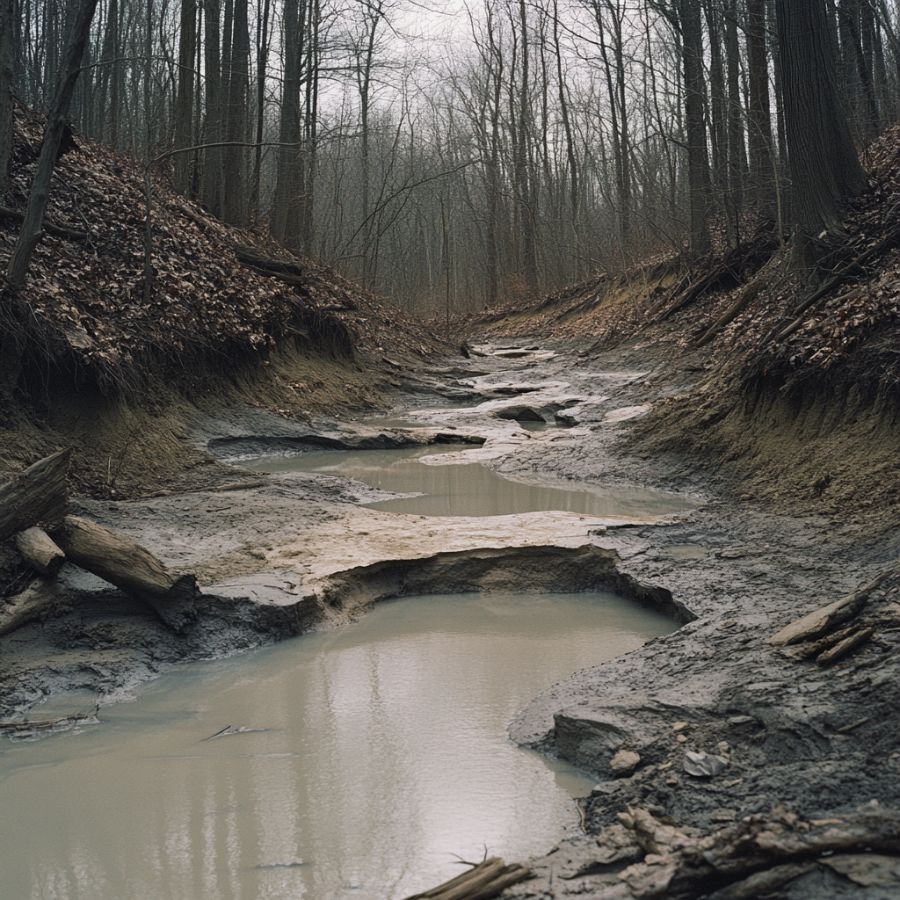
Lawrence Clay is a geological gem that sits in a region rich with shale, siltstone, and mudstone formations. Part of the ancient Conemaugh Group, the area dates back to the Pennsylvanian period, roughly 300 million years ago.
What makes Lawrence Clay special is its diverse mineral makeup. Besides tourmaline, you might stumble upon calcite, gypsum, or even zircon.
The best hunting grounds are along creek beds and exposed clay deposits. Water-worn gravels often hide the most interesting finds.
As you explore, keep an eye out for the distinct colors of tourmaline – it can range from black to pink. The clay deposits themselves are a treasure trove, often revealing minerals embedded within.
Places Tourmaline has been found by county
After discussing our top picks, we wanted to discuss the other places on our list. Below is a list of the additional locations where we have succeeded, along with a breakdown of each place by county.
| County | Location |
| Jackson | Clarion Clay |

